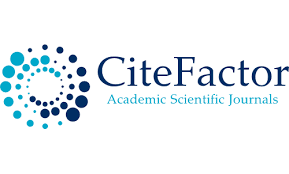Design of a New Color and Caliber Sorting Device
Keywords:
aerodynamic sorter, dielectric sorter, spectrumAbstract
The article presents the technology of creating a new modern seed sorting device for efficient use of agricultural machinery. Cotton seeds are split into pieces, mixed with kernels and husks, and then put into a press to extract oil. There are mechanical aerodynamic, fluid and electrical methods and methods of this device with low efficiency, low amount of released oil.
References
Michael D. Buser, Derek P. Whitelock, J. Cliff Boykin, and Gregory A. Separation of cotton ginning seeds. The Journal of Cotton Science 19: 168–175
Cotton: World Statistics. Bulletin of the International Cotton Advisory Committee, NY, November.
Tursunov Abdirasul Yulchibayevich Dissertation "Creation of efficient technology of sorting cotton seeds using air flow" Tashkent 2017
Xidirov Sh., Sobirjonov A. Program design of a color spectrum detection device, Eurasian Journal of Engineering and Technology, 13: 59–60.
Shoyimov P., Mirzayev R.I and others. Dielectric seed sorter. Jizzakh Polytechnic Institute. 2008
Akhmedkhodjayev Kh., Obidov A. Seed sorting devices monograph 2006 Namangan.
Yusubaliyev A. Elektricheskoye protravlivaniye semian khlopchatnika. Dissertation candidate of technical sciences, Yangiyul, 1985, 148 pages.
Yusubaliyev A., Shoyimov P. Dielectric separator semin khlopchatnika. Trudy Uz NIIME., Tashkent., 1992, pp. 151-154.
Shoyimov P., Mirzayev R.I and others. Measuring the electrical resistance of cotton seeds. Bukhara Institute of Food and Light Industry, 2008.
Michael D. Buser, Derek P. Whitelock, J. Cliff Boykin, and Gregory A. Separation of cotton ginning seeds. The Journal of Cotton Science 19:168–175
Downloads
Published
Issue
Section
License

This work is licensed under a Creative Commons Attribution-NonCommercial 4.0 International License.
User Rights
Under the Creative Commons Attribution-NonCommercial 4.0 International (CC-BY-NC), the author (s) and users are free to share (copy, distribute and transmit the contribution).
Rights of Authors
Authors retain the following rights:
1. Copyright and other proprietary rights relating to the article, such as patent rights,
2. the right to use the substance of the article in future works, including lectures and books,
3. the right to reproduce the article for own purposes, provided the copies are not offered for sale,
4. the right to self-archive the article.












